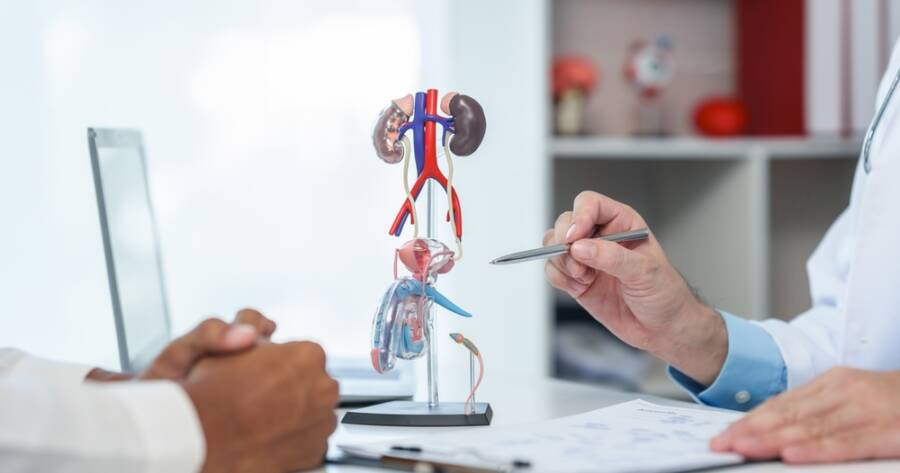Prostate cancer is one of the most common types of cancer among men, particularly those over the age of 50. Despite its prevalence, it often develops slowly, meaning early symptoms can be easy to miss or dismiss as unrelated issues. Recognizing the potential signs and seeking medical advice promptly could play a key role in managing outcomes. While no symptom guarantees a diagnosis, understanding the signals and maintaining awareness is crucial for taking proactive steps toward health.
What Is Prostate Cancer?
Prostate cancer develops in the prostate gland, a small walnut-shaped organ located below the bladder in men. This gland plays an essential role in producing seminal fluid.
The cancer itself can range from slow-growing forms, which might not require immediate treatment, to aggressive variants that spread quickly to other parts of the body. Detecting prostate cancer early may allow for more effective management, but this depends on identifying signs when they arise.
Early Symptoms That May Indicate Prostate Cancer
Prostate cancer in its initial stages often has few or no symptoms, which makes routine screenings all the more important. However, when signs do emerge, they are often linked to changes in urinary or sexual function. Some symptoms to watch for include:
Frequent urination, especially at night: A noticeable increase in trips to the bathroom, particularly during the night, can sometimes signal prostate issues, though this is also common with age.
Difficulty starting or stopping urination: Weak or interrupted urine flow may indicate that the prostate is pressing on the urethra.
Pain or burning during urination: This discomfort, while often linked to infections or other non-cancerous conditions, could potentially signal an issue with the prostate.
Blood in urine or semen: Though rare, this symptom can occur in certain prostate conditions, including cancer.
Erectile dysfunction or discomfort during ejaculation: Changes in sexual function might suggest prostate-related problems.
It’s important to remember that these symptoms can result from benign conditions such as an enlarged prostate (benign prostatic hyperplasia, or BPH) or a urinary tract infection. Consulting a healthcare provider is essential to determine the cause.
Advanced Symptoms
In more advanced cases, prostate cancer may spread beyond the prostate gland, causing additional symptoms. These could include:
Persistent pain in the hips, back, or thighs: Pain in these areas could result from the spread of cancer to the bones, although many other conditions could cause similar discomfort.
Unintended weight loss or fatigue: These symptoms can occur in advanced stages of many cancers, including prostate cancer.
Swelling in the legs or feet: This may indicate that the cancer has affected lymph nodes or blood flow.
Changes in bowel habits: In rare cases, prostate cancer that spreads to the rectum can cause gastrointestinal symptoms.
Again, while these symptoms may seem alarming, they are not exclusive to prostate cancer. Many treatable and less serious conditions can present in similar ways, emphasizing the importance of professional evaluation.
Why It’s Important to Stay Vigilant
Men often avoid discussing health concerns, particularly those related to urological or sexual health. However, ignoring potential symptoms could delay necessary interventions. Early detection of prostate cancer is associated with a broader range of treatment options and potentially better outcomes.
Routine screenings, such as prostate-specific antigen (PSA) blood tests and digital rectal exams (DRE), are tools that doctors use to monitor prostate health. These screenings, while not foolproof, can provide early warnings of changes in the prostate, even before symptoms arise.
It’s equally important to note that lifestyle factors such as diet, exercise, and family history can play a role in prostate cancer risk. Men with a family history of the condition, particularly if a father or brother was diagnosed, should be especially mindful of their screening schedules.
When to Seek Medical Advice
Any unusual symptoms related to urination, sexual health, or unexplained pain should prompt a visit to a healthcare provider. While the idea of undergoing medical exams may be daunting, modern diagnostics are increasingly less invasive and more accurate.
Even without symptoms, men over the age of 50, or those with risk factors such as African ancestry or a family history of prostate cancer, may want to discuss regular screenings with their doctors. Earlier screening (around age 45) is often recommended for high-risk individuals.
How You Can Stay Proactive
Adopting a proactive approach to health can make a meaningful difference. Steps to consider include:
Regular check-ups: Maintaining an open dialogue with your healthcare provider can help track and address any emerging issues.
Healthy lifestyle choices: A balanced diet rich in fruits, vegetables, and healthy fats, along with regular physical activity, may support overall prostate health.
Awareness of family history: Knowing your genetic predisposition can guide personalized screening schedules.
While these steps cannot guarantee prevention, they may contribute to overall wellness and early detection.
Stay Informed
Prostate cancer is a significant health concern, particularly for aging men, but awareness and vigilance can empower individuals to address it effectively. Recognizing the potential signs and seeking timely medical advice can help differentiate between benign conditions and more serious issues.
Remember, many symptoms are not definitive proof of cancer, but they should not be ignored. By staying informed and engaging with healthcare professionals, you can take meaningful steps to safeguard your health and well-being.

